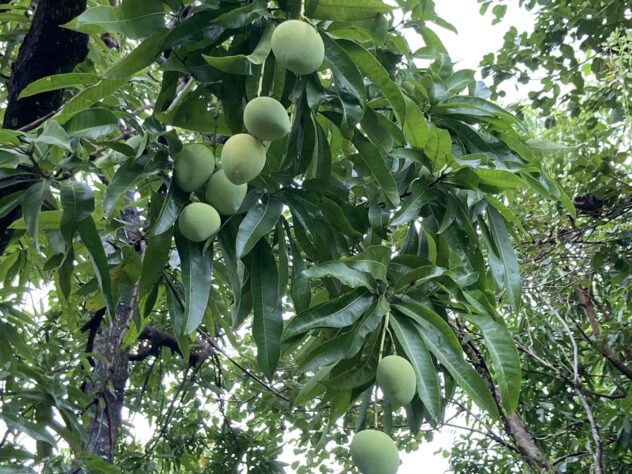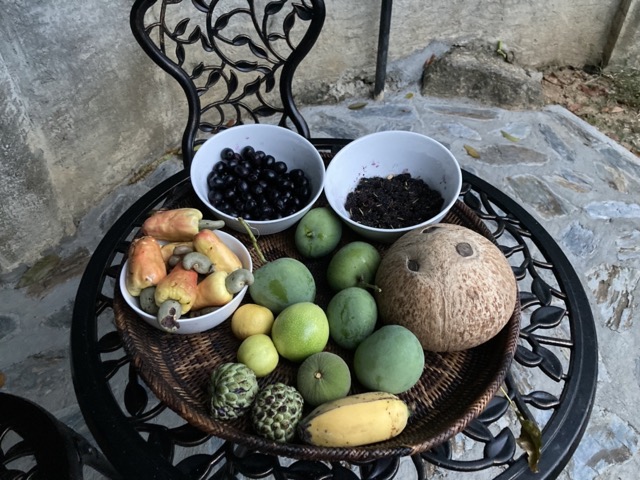Dark grey rain clouds build up over the mountains. Deep rumblings grow louder. A bright white flash followed closely by an ear-piercing thunder crack stops us mid-movement. We end our rehearsal, sit quietly on the stage, and brace ourselves for the next lightning strike. Suddenly, Rufus, followed by Bruno and Frida, scurry onto the scene, panting frantically, seeking shelter from the impending storm.
Another loud crack rips through the sky sending tons of rain pouring down. Instantly water fills the creek and overflows, carrying someone’s shoe away. Whirling winds blow, loosening ripen mangoes from the surrounding trees. Thunk! Thump! Thunk! Mangoes bombard the stage roof, and the loud sounds do little to calm the dogs. They dash out into the downpour to seek shelter elsewhere in a panic. The torrent doesn’t last long, and it quickly subsides. The clouds part, the sun shines again, and the boys leap from the stage to gather the fallen fruit.

The dry season in the Philippines usually spans from November to May. However, since January, we have experienced many small, brief storms or single-celled thunderstorms skipping the dry season altogether. The early intermittent rains have transformed Stairway into an enchanting tropical paradise complete with colorful arrays of flowers, scented flowering trees, an assortment of insects and birds, and a cornucopia of fruits and berries. The abundance of fruit around Stairway has also attracted many monkeys!
The header image includes, from left to right going clockwise: cashew seeds with cashew apples, “duhats” or Java plums, blackberries, a coconut, green mangoes, native sweet banana, custard fruits, and Philippine limes.
Click here to see more!
